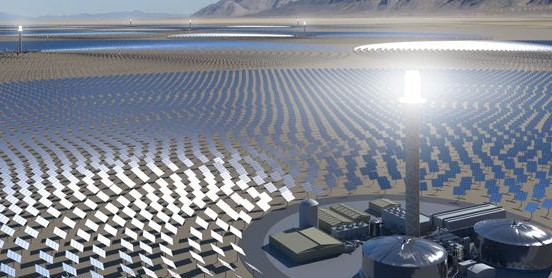The anti-animal agriculture narrative and plant-based diet agenda combines political ideology and commercial interests. This “movement” is insidious, unsavoury, and cannot be ignored by those who value liberty and consumer choice.
What’s Really Behind The Plant-Based Diet Agenda?
I have previously covered the anti-animal agriculture narrative here and the plant-based and/or alternative protein agenda here.
But as the plant-based diet agenda is currently enjoying an uninterrupted public relations campaign facilitated by the obliging media; and given last week’s launch of the EAT-Lancet Commission’s report on healthy diets for sustainable food systems, I feel compelled to delve a little deeper into the matter.
Although I loathe mixing business and politics, livestock agriculture is becoming increasingly politicised. Regrettably, this forces one’s hand.
Why something so innocuous as personal dietary choice needs to be voiced so loudly is a strange phenomenon. However, there are some interesting facets of information that can be gleaned by analysing the EAT-Lancet Commission’s posturing and the alternative protein movement.
The anti-animal agriculture narrative and plant-based diet agenda combines political ideology and commercial interests. This “movement” is insidious, unsavoury, and cannot be ignored by those who value liberty and consumer choice.
Although most people cannot deprive themselves of high-quality nutrition for long-periods of time, the fact that some people are going to such great lengths to avoid the consumption of meat and dairy products is rather telling.
The nutritional argument against consuming animal source foods is non-existent. It is quite simply illogical that red meat or dairy products cause modern diseases (I have previously covered this subject here).
Dietary recommendations have been moulded by religious and other personal beliefs (such as the temperance movement), animal rights activists, and food companies since their inception. None of this is anything new. What is new, is the concept of promoting a “planetary health diet.”
Nutrition science is ambiguous enough without adding extra layers of complexity. What’s good for the planet and what’s good for human health are understandable concerns to have. But conjoining the two is imprudent, especially when innumerable falsehoods are bandied about regarding both.
By far and away, the biggest contemporary driver of the anti-animal agriculture narrative is the supposed environmental impact of livestock – and that is a good place to start a critique of the plant-based diet agenda.
Climate Change Cover Story
“The great enemy of truth is very often not the lie – deliberate, contrived and dishonest – but the myth – persistent, persuasive, and unrealistic. Too often we hold fast to the clichés of our forebears. We subject all facts to a prefabricated set of interpretations. We enjoy the comfort of opinion without the discomfort of thought.” – John F. Kennedy
Central to the anti-animal agriculture narrative, is climate change. The accusation that cattle are a leading cause of anthropogenic climate change is perhaps the most absurd concept of the global warming theory.
Nevertheless, this is the charge being laid against livestock agriculture.
Analysing the anthropogenic climate change thesis is not the purpose of this post. But the promotion of this claim is pivotal to the anti-animal agriculture narrative.
It is important to remember, that there is no such thing as consensus in science. Science progresses by exploding dud theories of the past. Consequently, the debate around anthropogenic climate change will continue for some time yet.
That the climate is constantly changing does not appear to be in dispute. What causes the weather to do what, particularly in terms of historic records and future predictions, is the bone of contention.
In the video below, the oft berated Lord Christopher Monckton shares his thoughts on climate change and why it should be questioned.
Lord Monckton’s conclusions on what is really driving the fixation with anthropogenic climate change is important to note, if one wishes to fully understand the plant-based diet agenda.
In any event, even if the politically distorted and commercially valuable anthropogenic climate change claim is assumed to be true, and the correct course of action to “save” the world from impending doom is to reduce the minute concentration of a substance essential for all life on earth, targeting livestock agriculture is of little consequence.
According to the United States Environmental Protection Agency (EPA), agriculture accounted for 9% of U.S. greenhouse gas emissions in 2016. Of this 9%, animal agriculture was responsible for 4%. Transportation and electricity generation were each responsible for 29% of emissions, industry 22%, and commercial/residential 12%.
However, the Food and Agriculture Organization (FAO) of the United Nations (UN) claim that livestock agriculture is responsible for a sizeable 14.5% of global emissions. This figure is such because less developed countries are generally home to inefficient, unproductive livestock.
For example, in 2014/15, the average daily milk yield of indigenous cows in India was 2.54 kg. Whereas the average daily milk yield of an American cow is approximately 31 kg.
Therefore, one American cow produces as much milk as twelve Indian cows. As a result, the less developed countries contribute a greater portion of their greenhouse gases to the world total in the form of livestock emissions.
In fact, the Intergovernmental Panel on Climate Change (IPCC) estimates that 70 – 80% of global livestock related greenhouse gas emissions stem from developing countries. The implication of this, is that third world countries are to blame for “causing anthropogenic climate change” – which is obviously ridiculous.
As a final blow to this livestock emissions nonsense, consider the following:
In 1909 the number of motor vehicles registered in the U.S. totalled 312,000. By 2015, this had increased to 263,610,219. Over this time period, the number of motor vehicles per person increased by a whopping 27,233%.
However, between 1909 and 2015, the number of cattle (beef + dairy) per person in the U.S. decreased by 58%.
The premise that cattle are a leading cause of anthropogenic climate change never really made sense. This argument is merely co-opted to further the anti-animal agriculture narrative.
Free Range Report
Thank you for reading our latest report, but before you go…
Our loyalty is to the truth and to YOU, our readers!
We respect your reading experience, and have refrained from putting up a paywall and obnoxious advertisements, which means that we get by on small donations from people like you. We’re not asking for much, but any amount that you can give goes a long way to securing a better future for the people who make America great.
[paypal_donation_button]
For as little as $1 you can support Free Range Report, and it takes only a moment.



